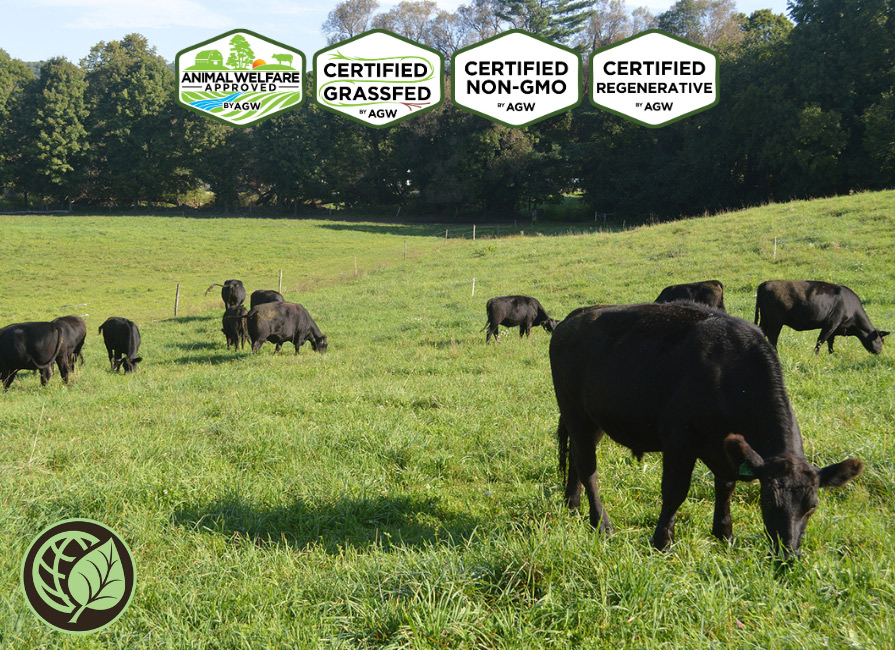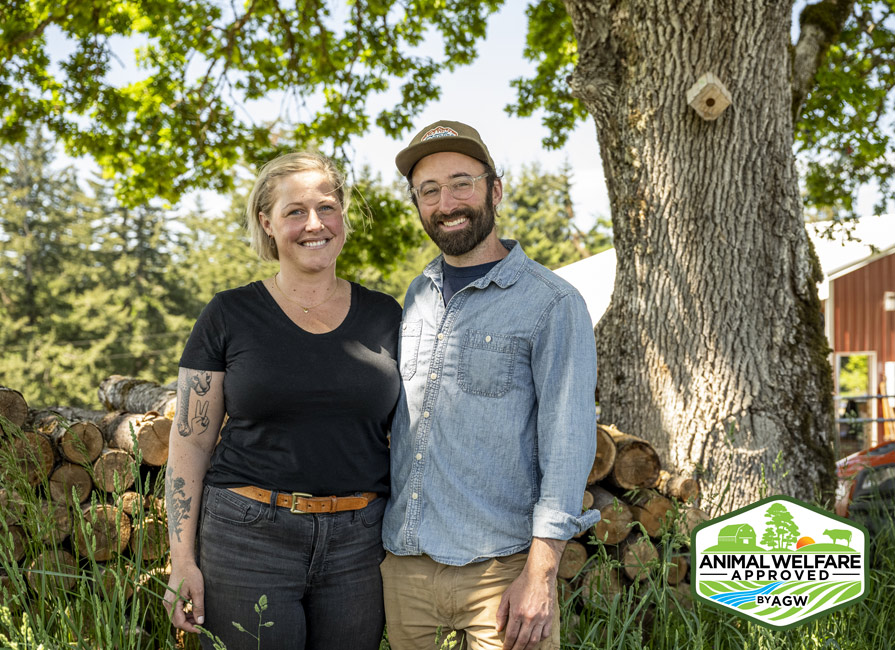I read Michael Grunwald’s recent New York Times Opinion piece, Sorry, but This Is the…
Is “Grassfed” becoming the new “Natural”?
With all the words and phrases on today’s food packaging, food writers, bloggers and advocacy groups now play a vital role once occupied by scientists and practitioners in educating consumers, helping them navigate the ‘food labels minefield.’ It’s a big responsibility.
Thanks to the internet and social media, one blog or OpEd can influence many thousands of readers, and become the new fact, affecting food shopping decisions and dietary trends. So it is vitally important that the issues are well-researched, and any information or guidance given is accurate. One slip of the tongue (or keyboard) can leave readers confused, further jaded—or even righteously misinformed.
An example arose in a recent article about the environmental benefits of an educational institution sourcing beef from organic “grassfed” dairy cows. At A Greener World—a not-for-profit that’s home to North America’s leading sustainable food labels and a big proponent of grassfed beef— we were naturally interested to see who certified the beef and how the “grassfed” claim was justified.
After a bit of digging we soon identified who the beef supplier was—and we were rather surprised. We know the business and they openly acknowledge their beef comes from ‘cull cows’ bought from organic dairy farms across the region. (Cull cows are older dairy cows who are no longer producing milk economically and have been replaced by younger cows in the herd.) A quick look on their website reveals the dairy cull cows are indeed managed on pasture, but were fed mixed grains during their milking lives to help increase milk yield.
The majority of consumers believe an animal should be fed a diet of 100% grass and forage from birth to slaughter for the meat (or milk) to bear a grassfed claim. (This is the standard set by A Greener World’s Certified Grassfed by AGW label—more on that later.)
So why did the article refer to grassfed beef at all? It seems the writer simply assumed the beef was “grassfed” because the cull cows are managed outdoors on pastures in their post-retirement. Either they didn’t do enough research or they didn’t have sufficient expertise to write with authority on the issue of grassfed labeling in the first place.
I have no doubt the writer made a genuine mistake and did not intentionally mean to mislead the reader. The story is positive and it’s great to see large educational institutions taking greater responsibility in their meat purchasing decisions. But how many consumers read that article and now assume the beef in question is 100% grassfed? And how many consumers will be confused or concerned—or even worse—when they eventually learn it is not?
The trouble is the author is not alone in making this mistake. Many food writers and bloggers blindly promote grassfed meat and a host of other well-meant recommendations without fully understanding the chaos and confusion surrounding the grassfed label claim—and particularly why consumers should always seek grassfed labels with independent third-party certification.
If you ask consumers to explain what they think “grassfed farming” means, they will almost always describe a pastoral farming scene where animals are raised outdoors on pasture, rather than in intensive feedlots, and fed a diet of grass—nothing more. Yet despite the apparent assurances a grassfed label might offer, the reality is that many so-called “grassfed” labels fall well short of public expectations.
According to the U.S. Food Safety Inspection Service (FSIS)—the government department responsible for ensuring meat and poultry labels contain information that is truthful and not misleading—a company making a 100% grassfed label claim requires official approval before they can use it on packaging. Approval is only granted where “sufficient documentation” is provided to show that animals are fed a 100% forage diet from weaning onwards. Sounds good, right? That’s until you learn that a signed statement (known as an affidavit) from the farmer or food manufacturer is typically considered “sufficient documentation.” There is absolutely no requirement for a grassfed label claim to be verified by a farm audit or other form of inspection to ensure they are telling the truth. It doesn’t take a genius to see that it’s open to potential abuse.
It doesn’t stop there. FSIS does not restrict companies to being 100% grassfed. In other words, companies can make grassfed percentage label claims, such as “50% Grassfed, Finished on Pasture with Supplemental Grain Feeding.” This means conventional feedlot beef could still make a grassfed claim—clearly not what most consumers expect when they see the word “grassfed.” And while manufacturers are required to include the percentage of grass and forage fed somewhere on the label (often in smaller font), this simply adds to the confusion about grassfed claims.
Perhaps the biggest issue of all, however, is that most grassfed labels only address what the animal eats—nothing more. Unless the grassfed claim is accompanied by a third-party certification that addresses, say, animal welfare or environmental management, most of the grassfed meat you’ll find in grocery stores probably involved highly questionable farming practices like feedlots (confinement) or the use routine antibiotics and growth hormones. When you realize that grassfed cattle may spend a third of their lives in confinement on barren feedlot systems, administered routine antibiotics and growth hormones, and fed trucked in cut grass and forage—or even fed no forage or grass at all—you would be right to question whether this beef should be labeled grassfed at all.
In such a confusing marketplace, transparent, trusted third-party certification and auditing is vital for protecting the interests of “true” grassfed farmers and conscientious consumers alike. But only three groups in the U.S. are actively certifying farms making grassfed claims to ensure the animals only eat grass or forage: Certified Grassfed by AGW, American Grassfed Association Certified and PCO Certified 100% Grassfed. Of these, only one also requires farmers to manage their animals according to the highest welfare standards: Certified Grassfed by AGW.
If food writers and bloggers don’t understand the importance of independent third-party certification in validating grassfed claims, or fail to investigate and highlight the production systems behind these label, then “grassfed” will end up like the multitude of other misleading or meaningless food label claims out there—like “natural” or “antibiotic-free”—that only serve to mislead consumers. Every day, high-welfare, sustainable farmers are losing their market to these kind of misleading label claims, as consumers are hoodwinked into paying more for the same old mass-produced food. The “natural” label claim has nothing to do with how an animal might have been raised or treated, and only applies only to whether meat or poultry product is processed, while “antibiotic-free” producers keep animals in the same old industrial conditions and face huge pressure to withhold necessary antibiotic treatments to avoid losing premium payments. Under the “antibiotic-free” label, the famers lose, the animals lose and the consumers lose—yet multinational agribusiness wins big.
Writers need to take the time to research their subjects and present the full facts. By encouraging consumers to look for grassfed certifications that guarantee animals were (at the very least) fed a 100% grass and forage diet, we can ensure consumer expectations are met and protect farmers who are trying to do the right thing. If we don’t, the ‘greenwashing’ will continue unabated—at the cost of the consumer and the farmer.



